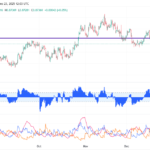A company’s objective when estimating a spot rate is only that it reflects the rate at which an orderly exchange transaction would take place at the measurement date between market participants under prevailing economic conditions. The amendments contain no specific requirements for estimating a spot rate.
Therefore, when estimating a spot rate a company can use:
- an observable exchange rate without adjustment; or
- another estimation technique.
Using an observable rate
A company can use an observable rate if that rate meets the estimation objective – i.e. the rate reflects that at which an orderly exchange transaction would take place at the measurement date between market participants under prevailing economic conditions.
When making this assessment, a company needs to consider:
- whether several observable exchange rates exist;
- the purpose for which the currency is exchangeable;
- the nature of the exchange rate; and
- the frequency with which exchange rates are updated.
Examples of an observable exchange rate include the following.
- A spot exchange rate for a purpose other than that for which the company is assessing exchangeability.
- The first exchange rate at which a company is able to obtain the other currency for its specified purpose after exchangeability is restored. If a company opts to use this rate as an observable rate, then it would also need to consider the time elapsed between the measurement date and the date at which exchangeability is restored, as well as inflation rates.
Using another estimation technique
When estimating a spot rate, a company may use any observable exchange rate and adjust it as necessary. This includes using rates from exchange transactions in markets or exchange mechanisms that do not create enforceable rights and obligations. However, the technique used needs to meet the estimation objective.




















